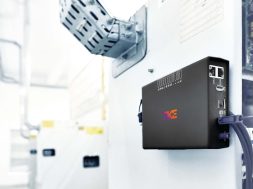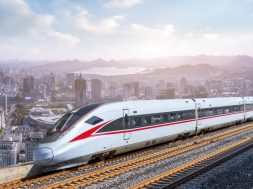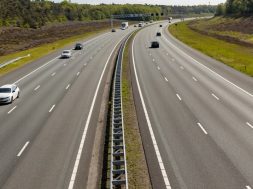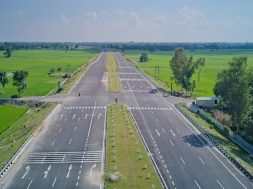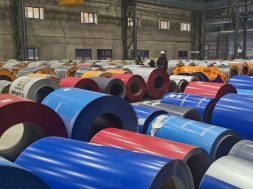How are AI and cloud technology improving the elevator industry

“In the age of smart elevators, the seamless integration of AI and cloud-based systems enhances efficiency and revolutionises the passenger experience, making elevators intelligent companions in our daily vertical journeys.” Manish Mehan, CEO and MD of TK Elevator.
The advent of elevators marked a revolutionising shift in vertical transportation, reshaping the living and working environments by facilitating seamless movement within buildings. As technology rapidly progresses, elevators are undergoing a transformative integration of artificial intelligence (AI) and cloud-based systems, revolutionising their functionality and enhancing the passenger experience. This evolution is not just about convenience; it’s a profound shift that adds value, flexibility, and overall appeal to buildings. The infusion of AI empowers businesses with accelerated data, efficient automation, and the ability to make informed decisions. The strategic incorporation in elevators offers a distinct advantage in predictive and preventive capabilities, particularly in preventing potential accidents.
By harnessing data from diverse sensors like motion, temperature, and vibration sensors embedded in elevators, AI can detect emerging issues before they escalate into critical problems. This combination of digitisation and artificial intelligence ensures a smoother ride for occupants and highlights technology’s significant impact on the safety and efficiency of vertical transportation systems.
Furthermore, AI and cloud services contribute to elevator safety by monitoring passenger behaviour. It tracks the number of people in the elevator and their positioning, preventing overcrowding and incidents caused by individuals getting stuck in the doors. Moreover, it can identify if someone behaves in a manner that could threaten others, such as pushing or shoving, and promptly alert security personnel. This dispatch system continually learns and refines its operations over time, considering variables like the number of passengers, destination floor, and the current state of the elevator. This holistic approach not only enhances safety measures but also exemplifies adaptability.
When discussing Cloud-based and AI-driven elevator technology, various predictive applications are crucial in predicting demand and facilitating informed decision-making. These applications encompass:
· Anticipating passenger traffic patterns
· Forecasting elevator stops
· Predicting daily operational scenarios
· Implementing automatic performance tuning
These predictive elements collectively enhance elevator safety through proactive and intelligent measures.
AI-enhancing elevator experience in 2024
As the use of AI has been rapidly increasing, the alliance of smart systems in elevators is becoming increasingly common. Here are a few ways AI will enhance the elevator experience in 2024.
Predictive maintenance: Utilising AI algorithms, sensor data from elevators can be analysed to anticipate potential component failures, thus reducing the risk of expensive breakdowns and minimising downtime. Integrating APIs directly into Building Management Systems (BMS) facilitates easy notification to staff in the event of malfunctions, reducing downtime and documentation efforts. Furthermore, this integration enhances facilities management service levels.
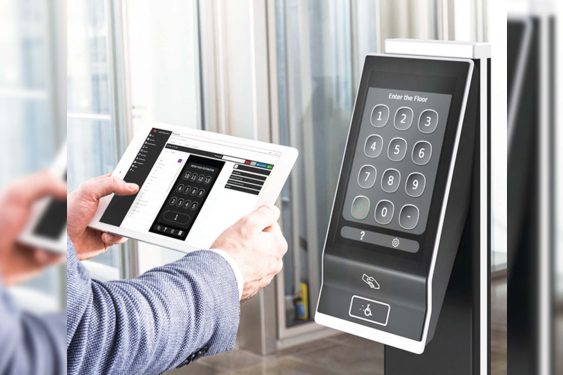
Smart traffic management: Efficient elevator traffic management is crucial for high-rise buildings, aiming to minimise wait times, alleviate congestion, and optimise overall efficiency. AI and cloud-based services are pivotal in achieving effective traffic management, ensuring the seamless movement of people and goods. It can optimise elevator traffic, reducing wait times and improving passenger experience. Consequently, essential factors such as occupancy levels, peak usage hours, elevator frequency, and other relevant parameters can be assessed.
Personalised experiences: The latest connected elevator solutions can identify specific passengers and customise their experience based on individual preferences. This personalisation extends to anticipating the needs of passengers who frequently use the elevator at specific times, allowing the AI system to optimise the ride for a more tailored experience. Using customised Application Programming Interfaces (APIs) adds a layer of ultimate flexibility, enabling the effective utilisation of data for building automation purposes.
Intelligent Monitoring: Elevator surveillance systems powered by artificial intelligence can identify questionable conduct or potential safety risks, including overcrowding, vandalism, or unauthorised entry. These advanced systems can instantly notify building security or emergency personnel, promptly responding to incidents.
Design and manufacturing: Generative AI has the potential to transform elevator design and manufacturing, enabling the creation of innovative components and systems while optimising the production process. This technology empowers engineers to explore unconventional solutions, leading to safer, more reliable, and energy-efficient elevators.
Elevating opportunities for smart elevators
The increasing environmental awareness among consumers is driving a notable shift towards premium green building materials for the elevator industry. This trend reflects a growing emphasis on effective and smart elevator energy usage. Future Market Insight’s research indicates that by the end of 2026, the Asia Pacific region is poised to experience an impressive year-on-year growth rate of approximately 16 percent. This surge is attributed to the rapid development of industrial infrastructure and the initiation of sustainable building projects, which are set to amplify the popularity of smart elevator automation systems.
The adoption of smart elevators not only contributes to energy efficiency but also diminishes dependency and consumption rates. As smart cities continue to evolve, and there is an increased focus on maintaining and repairing existing infrastructure, the preference for green and smart elevators is expected to rise.
Bottom line
Including cloud-based technology and services and artificial intelligence (AI) in elevators has transformed vertical transportation, improving efficiency, safety, and the overall passenger experience. Elevators now function as intelligent systems, equipped with AI-driven elevating systems which further predict, manage, monitor, personalise, and dynamically adjust to users’ requirements. As technological advancements progress, we anticipate ongoing innovations in this domain, resulting in even smarter, safer, and more advanced vertical transportation systems.
For more info visit: https://www.tkelevator.com/in-en/
Cookie Consent
We use cookies to personalize your experience. By continuing to visit this website you agree to our Terms & Conditions, Privacy Policy and Cookie Policy.
